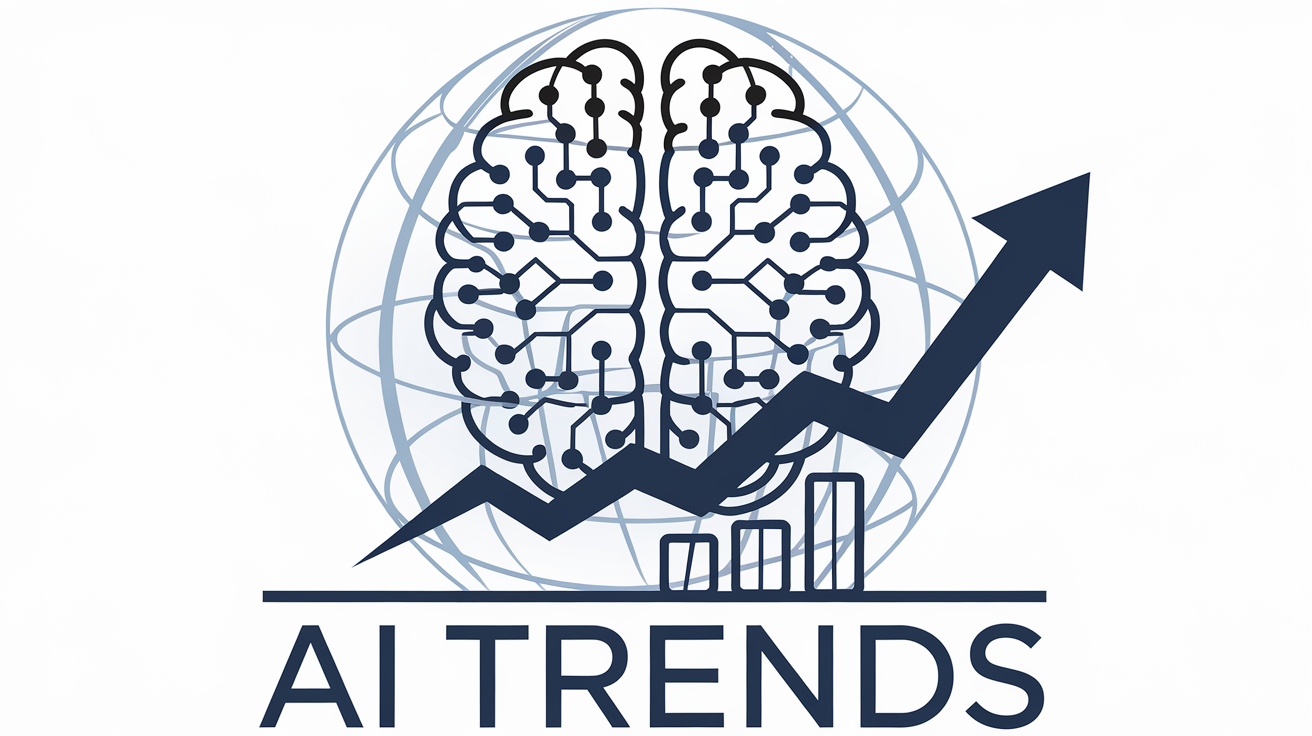In today’s fast-paced market, businesses use ai-driven business decision making to stay ahead. Artificial intelligence in business turns data into useful insights. This helps leaders save money, find trends, and innovate.
Companies like Amazon and Netflix already use AI to guess what customers want and make things run smoother. Now, this tech is available to all businesses, helping them make better choices.
By using AI tools, companies make fewer mistakes and base decisions on real-time data. These systems make things like managing stock and marketing plans better and faster. Businesses that start early see quicker problem-solving and more money coming in.
This guide will show how businesses can use these technologies to succeed in a world driven by data.
Table of Contents
ToggleKey Takeaways
- AI-driven decision-making cuts errors and speeds up strategic choices.
- Artificial intelligence in business helps identify opportunities missed by traditional methods.
- Modern AI tools are scalable for both small and large enterprises.
- Adopting AI systems builds long-term competitive advantages.
- Data-driven decisions lead to better financial performance and customer satisfaction.
Understanding AI-Driven Business Decision Making
Today, business leaders move from guessing to precision. They now use intelligent decision making solutions powered by technology. This change helps companies innovate, compete, and grow in a data-driven world.
The Evolution of Decision Making in Business
Years ago, leaders trusted their instincts and limited data. They used spreadsheets and manual analysis. Then, analytics tools came, but still needed human help.
Now, advanced decision-making technology automates insights. It turns raw data into strategies that leaders can act on.
How AI Transforms Traditional Decision Processes
AI takes over routine tasks, letting teams focus on strategy. Machine learning finds trends humans miss. For example, Walmart uses AI to predict inventory needs.
This approach reduces waste and boosts sales. It also cuts down on errors and speeds up responses to market changes.
Key Components of Intelligent Decision Systems
- Data collection: Sensors, apps, and cloud platforms gather real-time information.
- Processing engines: Algorithms analyze data to uncover hidden patterns.
- User interfaces: Dashboards let teams visualize insights and act quickly.
These systems help teams make quicker, smarter choices. Startups like Palantir show their value across different industries.
The Competitive Advantage of Data-Driven Decision Making
Top companies use data-driven decision making to stay ahead. They make smart choices based on data, spotting trends others miss. This leads to growth for both big and small businesses.
- Quantitative wins: Higher ROI, cost cuts, and streamlined workflows.
- Qualitative wins: Better customer experiences, faster innovation, and stronger brand loyalty.
Netflix picks shows like Stranger Things based on what people watch. Amazon’s algorithms suggest products, increasing sales. Small businesses also benefit by tracking sales with tools like Google Analytics.
Begin with simple steps. Use free tools to monitor important data. As you do, your business will become more agile and ready to grab opportunities others don’t see.
Implementing AI Analytics for Strategic Business Decisions
Turning ideas into action begins with a clear plan. Here’s how to use ai analytics for business well. Also, how to build a culture based on data-driven decision making.
Assessing Your Organization’s AI Readiness
Start with a diagnostic check. Ask if teams have clean, relevant data. Are workflows set up for quick analysis? Tools like Gartner’s AI Maturity Model or McKinsey’s Digital Quotient surveys help.
Focus on tech, skills, and leadership gaps.
Building the Right Data Infrastructure
- Use cloud platforms like AWS or Azure for growth
- Implement ETL processes to merge data
- Make sure systems follow GDPR/CCPA rules

Selecting Appropriate AI Tools and Platforms
Choose tools that fit your goals. Google Cloud’s Vision API is great for tracking inventory. IBM Watson Studio is good for spotting fraud. Think about:
- How well they work with your ERP systems
- If they can grow with your business
- The support and training from vendors
Cultivating a Data-Driven Culture
“Culture eats strategy for breakfast.” — Peter Drucker
Start data literacy programs with DataCamp. Make teams where everyone works together on AI projects. Celebrate successes to encourage more use of AI.
Overcoming Challenges in Machine Learning for Decision Making
Machine learning for decision making holds great promise. Yet, real-world adoption faces many hurdles. From flawed data to ethical dilemmas, organizations must tackle these challenges to unlock AI’s true potential. Here’s how to overcome them.
Addressing Data Quality and Quantity Issues
Data is crucial for AI, but poor quality or scarcity can slow progress. Common issues include inconsistent formats, incomplete records, or biased samples. To solve these problems, consider the following:
- Automated data-cleaning tools to standardize inputs
- Collaborating with partners to expand datasets
- Using synthetic data to fill gaps in rare scenarios

Managing Algorithmic Bias and Ethical Concerns
Biased algorithms can lead to unfair outcomes. A 2023 MIT study found 68% of AI projects faced bias-related setbacks. To address this, consider the following steps:
- Regular audits by third-party ethics boards
- Building diverse training datasets
- Implementing explainable AI (XAI) models for transparency
“AI isn’t a replacement for human judgment—it’s a collaborator.” — MIT Sloan Management Review
Balancing Human Judgment with AI Recommendations
Overreliance on AI can overlook human expertise. Netflix uses a hybrid approach where algorithms suggest shows, but human curators make the final call. Key strategies include:
- Training teams to interpret, not just follow, AI insights
- Setting ethical guardrails for critical decisions
- Conducting weekly audits comparing AI suggestions to actual outcomes
By finding the right balance, artificial intelligence in business can enhance human insight, not replace it.
Real-World Success Stories: Smart Business Decisions Through AI
Companies across various sectors are showing that AI is more than a trend—it’s a real game-changer. They’re using AI to make smarter decisions and grow their businesses. These examples highlight how big and small companies alike are benefiting from AI.
| Company | Industry | Challenge | AI Solution | Results |
|---|---|---|---|---|
| Netflix | Media & Entertainment | High customer churn | Machine learning models analyzing viewer preferences | Retained 98% of subscribers annually |
| Amazon | E-commerce | Inventory stockouts | Demand forecasting algorithms | Reduced out-of-stock incidents by 50% |
| Mayo Clinic | Healthcare | Diagnostic delays | AI-driven diagnostic tools | Cut misdiagnosis rates by 30% in 2023 |
| Siemens | Manufacturing | Equipment downtime | Predictive maintenance systems | Increased machinery uptime by 25% |
| Capital One | Finance | Fraud detection | Real-time transaction analysis | Blocked $1.2 billion in fraudulent activity yearly |
Every success story shares a common thread: combining human insight with AI. Teams that understand AI insights make decisions quicker and more accurately. For example, Siemens used predictive analytics and engineer expertise to reduce equipment downtime. Similarly, Mayo Clinic doctors paired AI suggestions with their own judgment to create personalized treatment plans.
These stories are not just one-offs—they’re templates for success. Whether you’re a small startup or a large corporation, AI can revolutionize your industry. Are you ready to turn data into decisions? Explore how AI can reveal opportunities in your own data.
The Future of Advanced Decision-Making Technology
Business intelligence is on the verge of a big change. This change comes from predictive analytics ai and advanced decision-making technology. New tools are being developed that can learn and adapt quickly.
These tools can analyze customer feedback and spot trends in data. The future looks bright with endless possibilities.
Emerging AI Capabilities for Business Intelligence
- Natural language processing (NLP) tools now interpret emails, reviews, and social media to uncover hidden insights.
- Computer vision systems analyze images and videos to predict supply chain delays or quality control issues.
- Augmented analytics uses automation to simplify data exploration, making trends visible without deep technical skills.
Predictive Analytics AI and Forecasting Evolution
Tomorrow’s predictive analytics ai will do more than predict. It will prescribe actions. Here’s how it’s changing:
- Scenario modeling: Simulate outcomes under varying conditions.
- Prescriptive recommendations: Offer actionable steps alongside predictions.
- Real-time adjustments: Update strategies as new data streams in.
Democratization of Intelligent Decision Making Solutions
No-code platforms like Google’s AutoML and Microsoft Azure AI let anyone build models. APIs from IBM Watson and Amazon SageMaker make AI easy to add to systems. SaaS models make these tools affordable for startups.
“Democratization isn’t just about tools—it’s about turning data into decisions for every team.”
While we know what the future holds, when it arrives varies. Companies need to plan carefully. The future is already changing how we make decisions today.
Conclusion: Transforming Your Business with AI-Powered Insights
Adopting ai analytics for business is more than a trend. It’s a way to stay ahead of the competition. Start by finding areas where data can make a big difference, like improving inventory or customer service. Use pilot projects to test tools and see how they work.
Platforms like Tableau or Salesforce Einstein offer smart solutions for many industries. They help you make better decisions with data.
Creating a data-ready culture means teaching teams to use AI tools. It’s important to focus on ethical practices to keep trust. Make sure algorithms are clear and fair.
Short-term goals might include using real-time analytics to improve marketing or supply chains. Long-term success depends on keeping up with technology changes. This includes moving from predictive analytics to AI-driven forecasting.
Improvement is about small steps. Try free trials of ai analytics software to see what it can do without spending a lot. Share results across teams to encourage teamwork. The aim is to keep getting better, not to be perfect right away.
Small businesses can start with cloud-based tools like Google Analytics 360. Big companies might need custom models. See ai analytics as a partner in your strategy, not a replacement for human ideas.
By combining smart solutions with team skills, you can find new trends and react quickly to changes. The future is for those who mix innovation with practicality. Start today with one step and then keep building.
FAQ
What is AI-driven business decision making?
AI-driven business decision making uses artificial intelligence to analyze data. It helps make strategic choices more efficiently and accurately.
How can AI analytics improve traditional decision-making processes?
AI analytics automates data analysis and finds patterns. It offers predictive insights. This helps businesses make smarter decisions based on data, not just intuition.
What are the key components of intelligent decision-making solutions?
Key components include data collection, advanced algorithms, predictive analytics, and easy-to-understand interfaces. These help interpret analytical results.
How can businesses assess their AI readiness?
Businesses can check their AI readiness by looking at their data infrastructure. They should understand their current capabilities and identify skill gaps. They also need to set strategic AI goals.
What challenges might organizations face when implementing machine learning for decision making?
Challenges include data quality and quantity issues, managing bias in algorithms, and balancing AI suggestions with human judgment.
Can small businesses benefit from data-driven decision making?
Yes! Small businesses can use affordable tools and scalable solutions. This lets them implement data-driven strategies without needing a lot of resources.
What is predictive analytics AI, and how can it help businesses?
Predictive analytics AI uses data and machine learning to forecast trends. It helps businesses make proactive decisions and improve their strategies.
How do organizations balance human judgment with AI recommendations?
Organizations can balance AI and human judgment by working together. They should use AI insights to complement human judgment. This ensures decisions are well-rounded and contextually appropriate.
What emerging technologies are shaping the future of business decision making?
New technologies like advanced natural language processing, computer vision, and affordable SaaS solutions are making decision-making smarter. They are accessible to businesses of all sizes.
How does democratization of AI affect small businesses?
Democratization of AI lets small businesses access powerful tools through no-code/low-code platforms. This reduces barriers and helps them compete effectively.
You may also like: Exploring AI: A Beginner’s Guide to Artificial Intelligence

